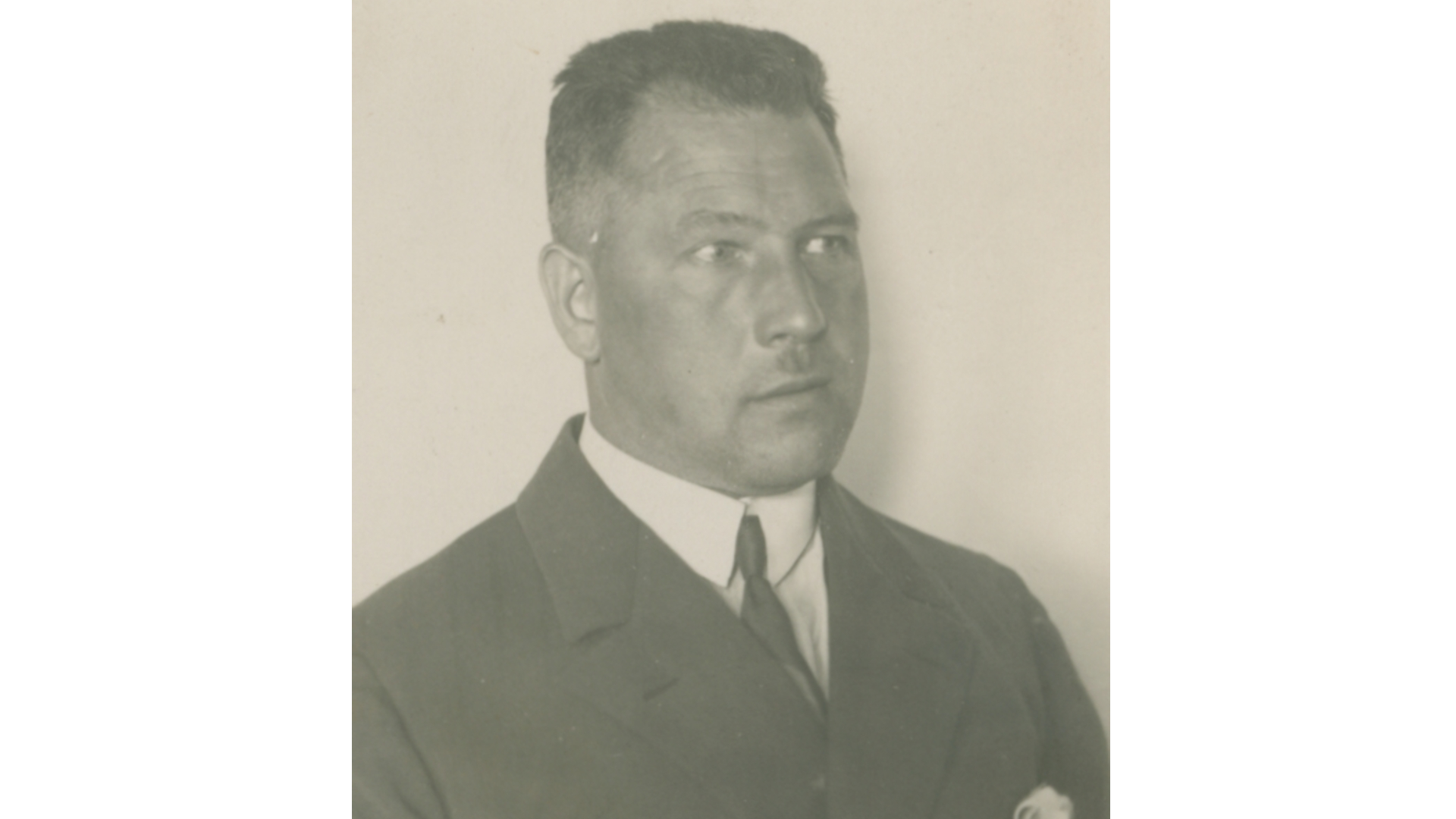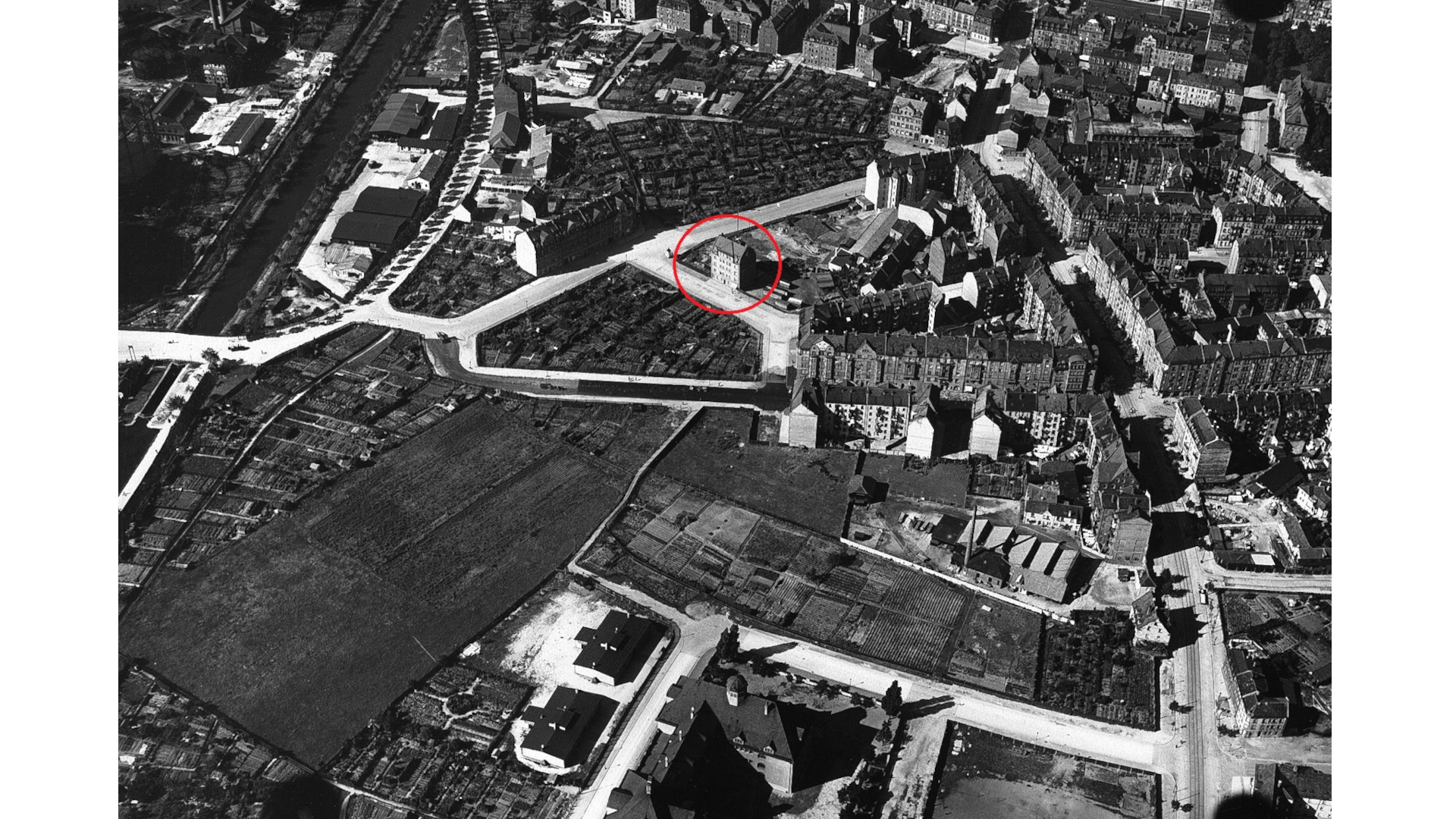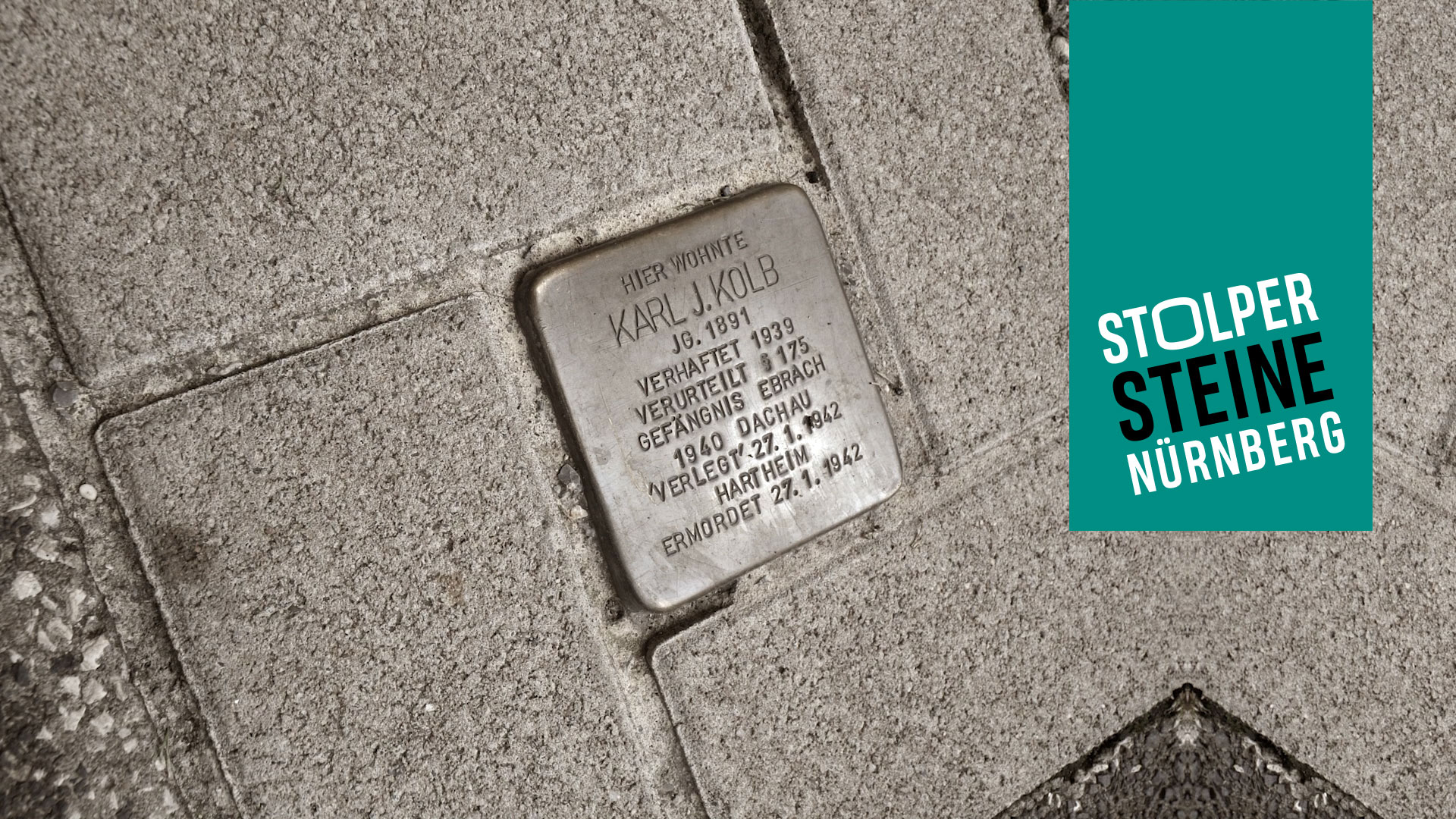| Location of stone: Herschelstrasse 17 | District: Steinbühl |
| Sponsors: Klaus Höcherl and Manfred Kümmerling | Laying of stone: 9 November 2018 |
Biography
On 9 November 2018 Gunter Demnig came to Nuremberg to take part in a ceremony to mark the laying of stumbling stones. On the day which marked the 80th anniversary of the “Night of Broken Glass”, he laid stumbling stones for Jewish and homosexual victims of National Socialism. Klaus Höcherl and Manfred Kümmerling sponsored the laying of the stumbling stone for Karl Jakob Kolb. Kolb was murdered in 1942 in the killing centre at Hartheim Castle.
Karl Jakob Kolb was born on 12 March 1891 in Bayreuth. After the First World War he moved to Nuremberg, where he worked as a trader. In 1919 he married Anna Munkert. In the years that followed, the marriage produced two children.
During this period Kolb had frequent sexual relationships with men. This resulted in the Nuremberg-Fürth regional court sentencing him to 15 months in prison. After serving his sentence Kolb continued to live in Nuremberg. He occasionally visited the “Wirtschaftsraum 3. Klasse” in Nuremberg’s main railway station. At the end of the 1930s this had established itself as a meeting place for homosexuals. It was there, in June 1939, that Kolb met a 20-year-old male prostitute with whom he then had sexual relations.
Kolb was to pay dearly for meeting this young man. A short time afterwards the prostitute was arrested and under pressure from the police, named several men who had given him money in exchange for sexual services. Thus, Kolb also came to the attention of the police and was subsequently taken into custody. Together with five other men, he was brought to trial before the Nuremberg-Fürth regional court in November 1939. Convicted of contravening Paragraph 175, the court sentenced him to nine months in prison. Kolb served his sentence in the prison in Ebrach until May 1940. However, he was not released afterwards. He was sent instead to Dachau concentration camp by order of Nuremberg’s criminal investigation department.
Kolb entered Dachau as a prisoner in June 1940. Shortly afterwards he was transferred for half a year to Neuengamme concentration camp near Hamburg. In May 1941 he was sent back to Dachau. Imprisonment in the two camps must have ground down the then 50-year-old Kolb physically and ruined his health. This can be the only explanation why, in the following winter, he was one of the victims of a large-scale murder programme designed by the SS to eliminate those prisoners in the camp hospital who were no longer able to work. At the end of January 1942, a so called “invalid transport” brought him to the killing centre at Hartheim Castle near Linz. He was murdered in the gas chamber there on 27 January.







